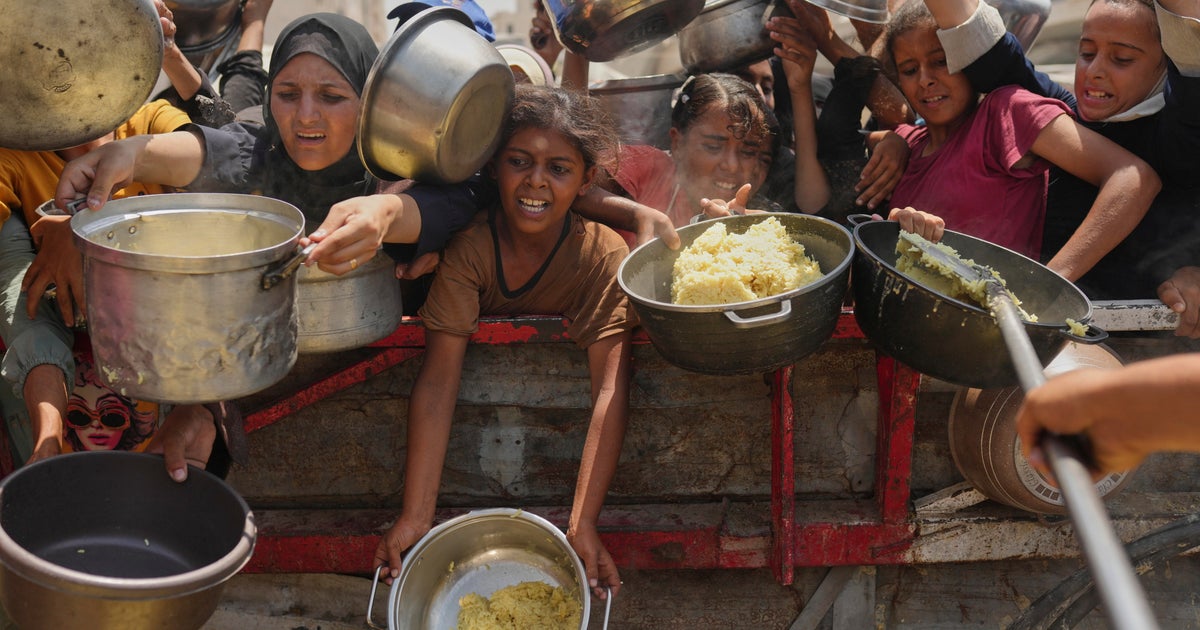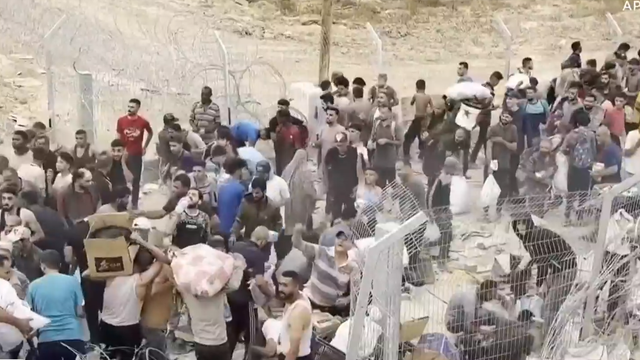

No response returned

The Gaza Strip's largest city is now gripped by famine, according to the world's leading authority on food crises. The Integrated Food Security Phase Classification, or IPC, said Friday that famine was occurring in Gaza City and that this was likely to spread to the southern cities of Khan Younis and Deir al-Balah without a ceasefire and an end to restrictions on humanitarian aid.
Aid groups and food security experts have warned for months that , but the is the first official declaration that the situation has reached this level. Israel immediately rejected the IPC's assessment, with the foreign ministry repeating bluntly a claim it has made for months, that "there is no famine in Gaza."
But the IPC — which is comprised of more than a dozen U.N. agencies, aid groups, governments and other bodies and was first set up in 2004 during the famine in Somalia — said it had concluded based on "reasonable evidence" that famine "is confirmed in Gaza Governorate."
"After , over half a million people in the Gaza Strip are facing catastrophic conditions characterized by starvation, destitution and death," the group said, warning that 1.07 million more people in Gaza were currently in a slightly lower starvation risk category, and that the circumstances were likely to expand within the densely populated Palestinian territory.
"Between mid-August and the end of September 2025, conditions are expected to further worsen with Famine projected to expand to Deir al-Balah and Khan Younis. Nearly a third of the population (641,000 people) are expected to face catastrophic conditions (IPC Phase 5), while those in Emergency (IPC Phase 4) will likely rise to 1.14 million (58 percent). Acute malnutrition is projected to continue worsening rapidly."
The IPC said for the next year at least, "at least 132,000 children under five are expected to suffer from acute malnutrition — double the IPC estimates from May 2025. This includes over 41,000 severe cases of ."
In a separate statement, Tom Fletcher, who heads the U.N.'s Office for the Coordination of Humanitarian Affairs, said Israel's "systematic obstruction" of aid had caused the famine in Gaza.
"It is a famine that we could have prevented if we had been allowed. Yet food stacks up at borders because of systematic obstruction by Israel," Fletcher told reporters in Geneva, calling it "a famine that will and must haunt us all."
In a statement, the Israeli foreign ministry categorically rejected the findings of the UN-backed report.
"There is no famine in Gaza," the ministry said, accusing the IPC of presenting a report "based on Hamas lies laundered through organizations with vested interests."
"Over 100,000 trucks of aid have entered Gaza since the start of the war, and in recent weeks a massive influx of aid has flooded the Strip with staple foods and caused a sharp decline in food prices, which have plummeted in the markets," the ministry said.
While more humanitarian aid has been allowed into Gaza in recent weeks, as Israel has come under intense international pressure, aid organizations say it is nowhere near the amount required. A controversial new U.S.- and Israeli-backed aid distribution group has also come under sharp criticism over the near its four distribution hubs in Gaza.
Israeli Prime Minister Benjamin Netanyahu has also repeatedly denied that there is widespread hunger in Gaza, calling reports of starvation "lies" promoted by Hamas.
COGAT, the Israeli military agency in charge of transferring aid to Gaza, said the report was "false and biased." It said that in recent weeks significant steps had been taken to expand the amount of aid entering the strip.
Famine can appear in pockets, sometimes small ones, and so a formal classification requires caution, food security experts say. The IPC has only confirmed famine a few times — in Somalia in 2011, and South Sudan in 2017 and 2020, and last year in parts of Sudan's western Darfur region. This is the first confirmed famine in the Middle East.
The IPC rates an area as in famine when all three of these conditions are confirmed:
Gaza has posed a major challenge for experts because Israel severely limits access to the territory, making it difficult to gather and confirm data.
In a separate report Friday, the Famine Review Committee, or FRC, said it, too, had concluded there was famine in part of Gaza. The FRC is a group of independent international food security experts regularly consulted by the IPC.
The group acts as an added layer of verification when the data shows there could be famine.
The data analyzed between July 1 and August 15 showed clear evidence that thresholds for starvation and acute malnutrition have been reached, according to the IPC. Gathering data for mortality has been harder, but the IPC said it is reasonable to conclude from the evidence that the necessary threshold has likely been reached.
Most cases of severe malnutrition in children arise through a combination of lack of nutrients along with an infection, leading to diarrhea and other symptoms that cause dehydration, said Alex de Waal, author of "Mass Starvation: The History and Future of Famine" and executive director of the World Peace Foundation.
"There are no standard guidelines for physicians to classify cause of death as 'malnutrition' as opposed to infection," he said.




